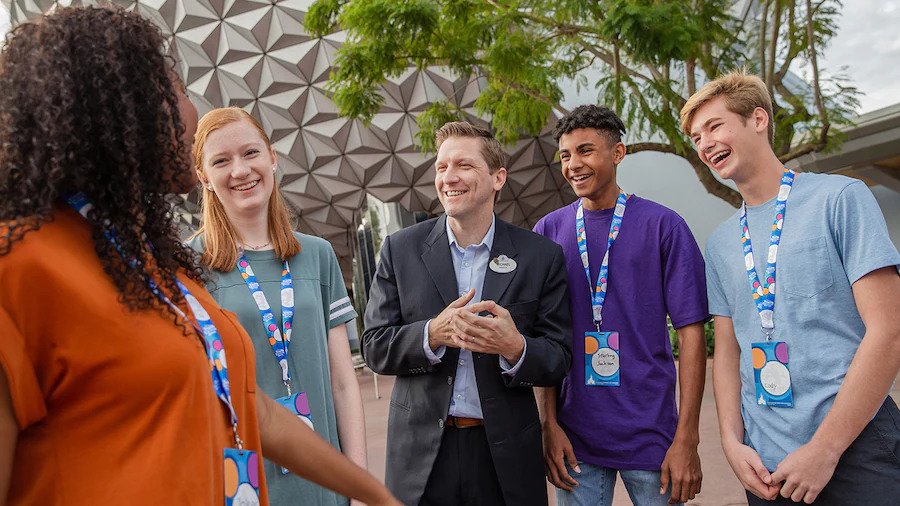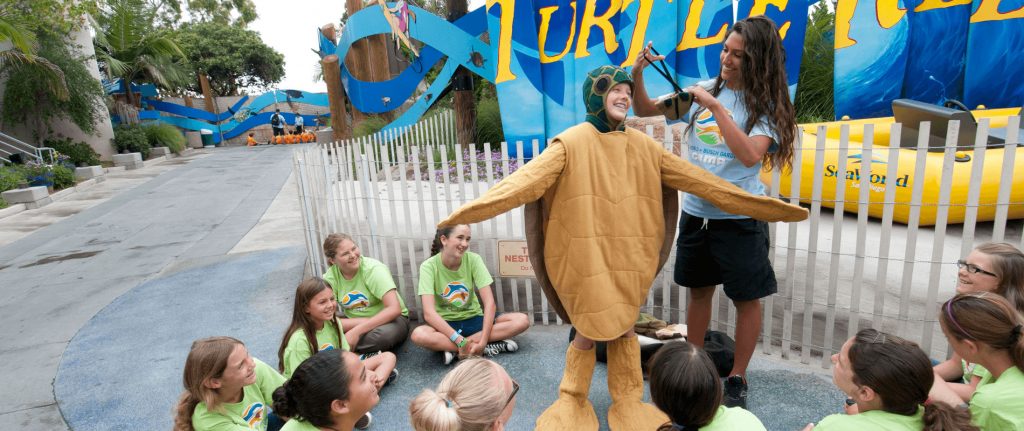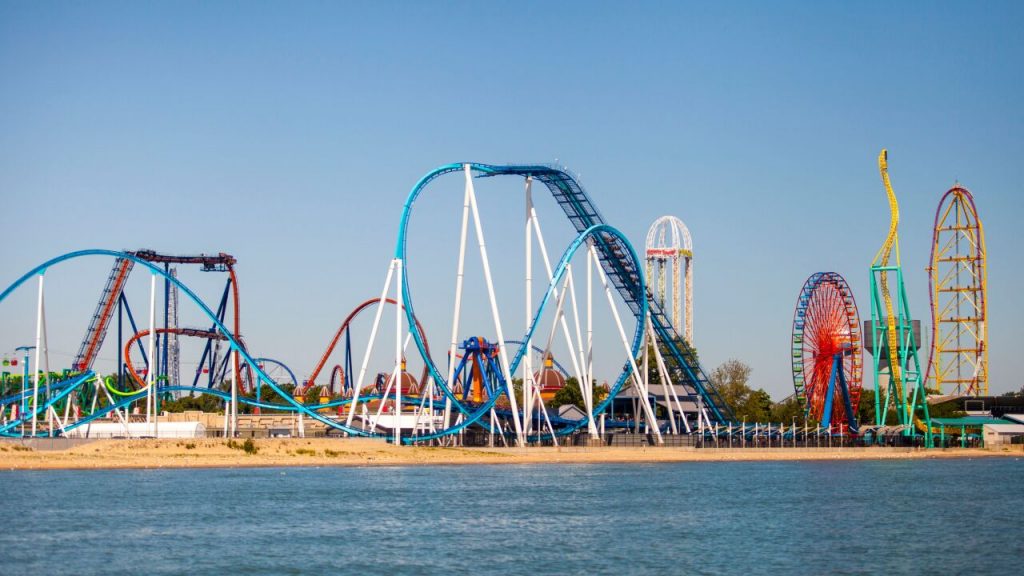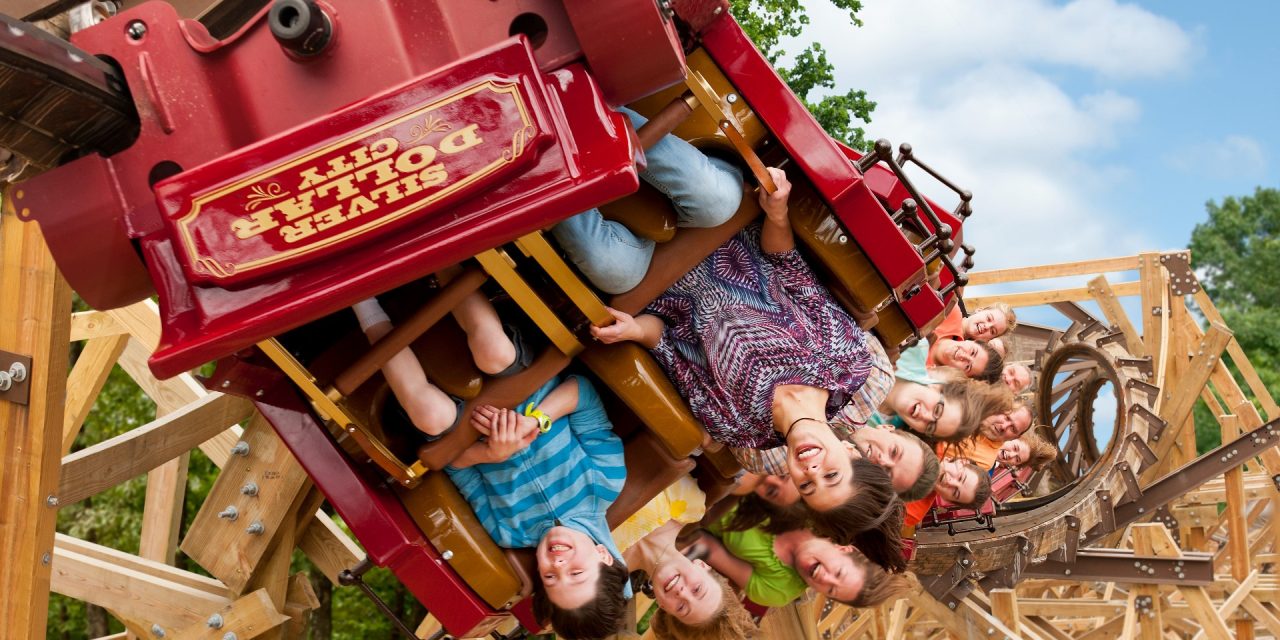These new attractions, programs and seminars are perfect for student groups
Theme parks are a staple of student travel for good reason. These locations offer high-velocity thrills in a contained environment that places teachers and chaperones at ease. They also offer a variety of educational programming that can allow theater groups to participate in in backstage workshops, bands to march in a parade and choral groups to perform for park guests. For students interested in STEM, many of these parks allow visitors to learn about the physics of roller coasters and the mathematics behind ride design.
Many school groups had temporarily paused their off-campus travel due to health precautions or budget reasons, but while the student sector was paused, these theme parks were busy creating new attractions for groups to enjoy. Here are the latest additions for major American theme parks over the past two years and educational programs to supplement them.
Walt Disney World Resort
Thousands of school groups annually visit the “Happiest Place on Earth” for the opportunity to march down Main Street, U.S.A. or perform in Tomorrowland. In 2021, Disney re-branded its highly popular Youth Program with a suite of workshops and experiences called the Disney Imagination Campus. Hosted at both the Disneyland and Walt Disney World Resorts, the programs are targeted primarily to middle and high school students under four areas of interest: Performing Arts, Art & Humanities, Science & Technology and Leadership & Innovation.
Disney Imagination Campus still offers popular activities like dance workshops and marching band performances, but it also offers new programs such as “Theme Park Design” and “Immersive Storytelling” that demonstrate how park layout, set decoration and music can all create immersive environments and move the parks’ narrative forward. Hosted by Imagineers (Disney’s term for theme park designers), these programs utilize multimedia presentations and in-park applications to engage with students. Also proving popular with student groups is the “Technology of Disney Parks” program, which offers backstage access to certain attractions and explains the science behind hydraulics, sound design and animatronics.
Students in your group more interested in the rides than the educational components will also find plenty to enjoy. Over the past two years, Disney has added several attractions, including a Ratatouille-themed addition to the France pavilion in Epcot. Guests enter an enchanting Paris as depicted in the 2007 Pixar film and shrink to the size of a mouse in Remy’s Ratatouille Adventure. Both parks have also completed Star Wars: Galaxy’s Edge, an immersive environment where students can design their own lightsaber, purchase their own droid and pilot the Millennium Falcon on Smugglers Run.

Universal Studios
Universal’s Orlando and Los Angeles locations continue to host the popular The STEAM App Series, which transforms some of the resort’s top attractions into creative environments that apply in-ride features into education opportunities for science, technology, engineering, arts and mathematics (STEAM) disciplines. In Transformers ROLL OUT, students learn about engineering principles of the Six Degrees of Freedom and reconstruct vehicle motion sequences for TRANSFORMERS: The Ride. In Jurassic Paleobotany, students search the Jurassic Park area for ancient plant species and compare their findings to previously discovered fossils. Every app is presented in an easy-to-use tablet format, and programs’ degrees of difficulty can be altered depending on how advanced your students are.
The Florida resort’s newest thrill ride is the VelociCoaster, a “launched” roller coaster that uses magnets to accelerate riders up to 50 miles per hour instead of using gravity and a traditional hill. An elaborate queue area guides visitors through a velociraptor paddock and into presentations hosted by Bryce Dallas Howard and Chris Pratt and BD Wong reprising their roles from the popular Jurassic World film series.
SeaWorld & Busch Gardens
With three parks across the United States (Orlando, San Antonio and the flagship location in San Diego), SeaWorld offers a compelling blend of thrill rides and zoo environments. New for 2022 is Ice Breaker, a breakneck roller coaster that features four airtime launches (including one in reverse) and the steepest vertical drop in Florida. Water park guests will enjoy the new Reef Plunge Water Slide, which plunges visitors 330 feet through aquatic environments that house dolphins and sharks.
The San Antonio location debuted the thrill ride Tidal Surge this spring. Forty riders will board two pendulum arms that soar progressively higher until guests are flying 135 feet in the air with incredible views of the entire park. Riptide Race at the adjacent Aquatica water park is a splashy dueling racer that will pit students against each other as they zoom down a tube slide 650 until crossing the finish line. Emperor, the new penguin-inspired attraction in San Diego just became the tallest, fastest, and longest dive coaster in California, with 90-degree plunges and speeds that top over 60 miles-per-hour.

Once your students have enjoyed these new attractions and live aquatic entertainment, there are numerous educational programs tailored for students to add an educational component to your visit. The SeaWorld Orlando Education Field Trip Experience allows school groups to visit the park for a reasonable $29-per-student fee that includes Q&As with resident zoologists, animal encounters and behind-the-scenes access to learn how the residents are cared for. The parks provide curriculum guides for grades K-12 that discuss conservation, the interdependency of marine habitats and animal biology, with elements that tie back to various park exhibits. SeaWorld also offers a variety of day camp programs that include the Thrill Seekers Camp (where students learn about physics and G-forces on various roller coasters), Marine Biology 101 (which includes snorkeling opportunities in a shark cage) and Zoo Careers (which spotlights seven zoological departments and their roles in animal comfort.
Busch Gardens in nearby Tampa also offers a blend of cutting-edge thrills and educational opportunities. The Animal Expeditions program allows students to explore the park on an adventure that includes animal meet-and-greets, eco-challenge activities and post-trip materials for teachers. Other opportunities include the “Forces of Nature” program that emphasizes genetic and ecology wile touring animal enclosures and the School on the Serengeti add-on, a 30-minute guided safari through the Serengeti Plain landscape and an opportunity to feed the giraffes. After enjoying the park’s zoological attractions, students can careen 206 feet in the air on the brand-new Iron Gwazi coaster.
Silver Dollar City
From mathematics to science to industrial technology, high school and middle school students will have the greatest “Kids-U-Cation” at Silver Dollar City in Branson. This company provides the perfect blend of education and fun with rides, shows, attractions and hands-on activities. Each curriculum provides different age-specific programs. Stay one or two days, and middle schoolers will master concepts including roller coaster engineering, budgeting and variables. High schoolers will master order of operations through a program called Silver Dollar City’s Swinging Bridge.
Cedar Point
Located west of Cleveland along the Lake Erie shoreline, Cedar Point boasts thrills and STEM-centric activities in equal measure. Through the parks student and youth programs, the park transforms into a state-of-the-art classroom that reveals the physics of roller coasters and sophisticated systems behind some of the world’s most extreme thrill rides. Hosted throughout the spring, the park’s Education Days welcome students to speak with engineering professionals and explore the park with supplemental materials. Engineering Day explores the logistics of theme park construction and invites students to understand the detailed mechanics behind the Top Thrill Dragster, while Physics, Science & Math Days allow visitors to see how force, energy and motion dictate the design of roller coasters and flume rides.

Dollywood
Founded by country music legend Dolly Parton, Dollywood theme park welcomes over three million guests in a typical season and offers thrill rides, musical productions and ample pavilion space for group meals. Students of every interest can enjoy the park, but teachers looking to add a STEM spin to their Dollywood experience should download the Science in the Park workbook. This material provides lesson plans for teachers that explain basic physics before putting the science into context on Dollywood’s many roller coasters. In the classroom, teachers can present Bernoulli’s Principle to explain flight as well as pitch, roll and yaw to explain basic ride movement.
Once in the park, students will ride popular roller coasters such as Thunderhead and Wild Eagle—first for fun, then with a critical physics perspective honed in the classroom. Students are provided with the coasters’ track length, number of turns and top speed. Armed with a stopwatch and formulas, students then calculate G-forces and velocity at various places along the track.
Students interested in animal science should also attend the Wings of America Bird Show. Hosted in the Wings of America Theater, the program showcases the incredible survival skills and physical strength of bald eagles, owls and vultures. Teachers can also register for a Birds of Prey experience, a more intimate presentation where American Eagle Foundation keepers discuss the majestic birds’ hunting abilities and take questions from the school-aged audience.






